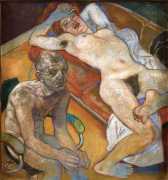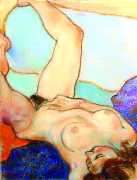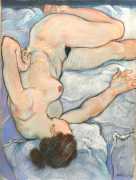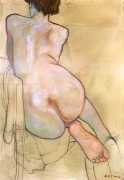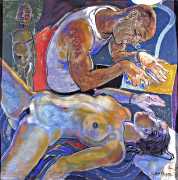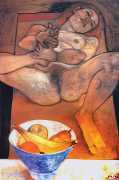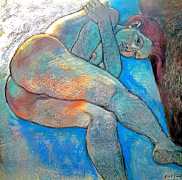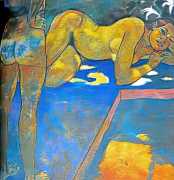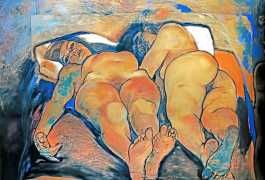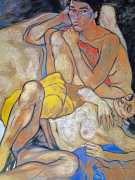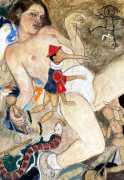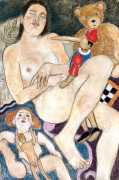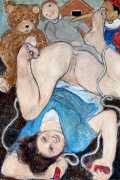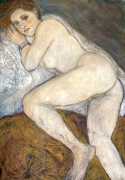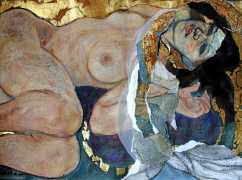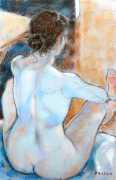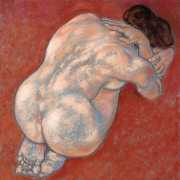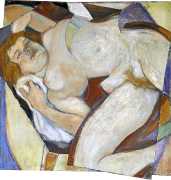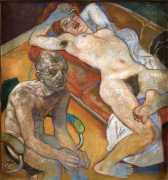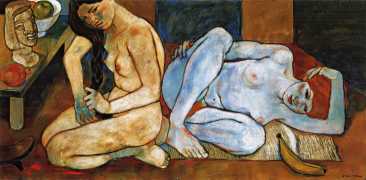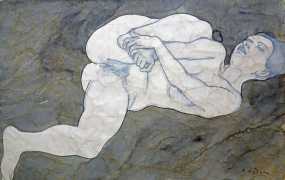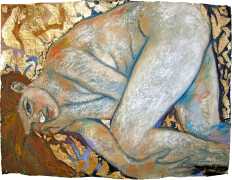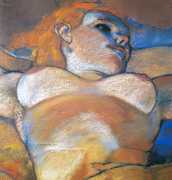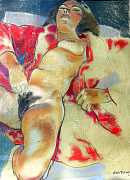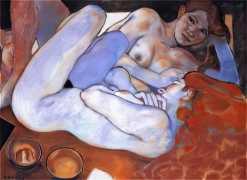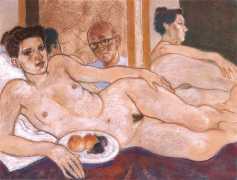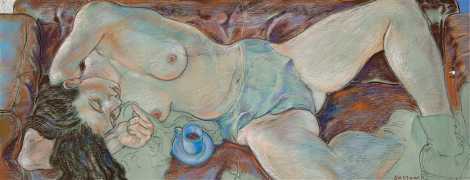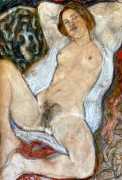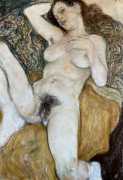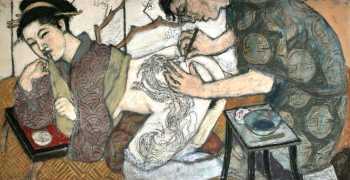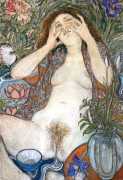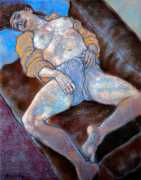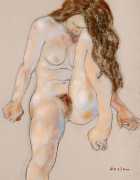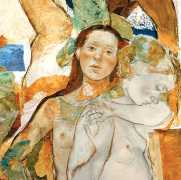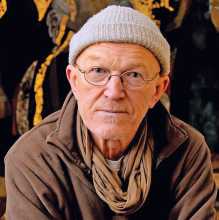 Michael Bastow was born in the south-west English coastal town of Bideford in Devon, and when he was just two years old he emigrated with his parents in Australia. He began to practice drawing and painting very early, but chose to study architecture at the University of Melbourne.
Michael Bastow was born in the south-west English coastal town of Bideford in Devon, and when he was just two years old he emigrated with his parents in Australia. He began to practice drawing and painting very early, but chose to study architecture at the University of Melbourne.
He returned to England in 1967 where he worked in the film industry for ten years, before moving to Belgium in 1974 to devote himself fulltime to art. He started to exhibit his trademark pastels, mostly of naked women, in the late 1970s, and in 1982 moved to Paris, where he contributed regularly to the magazine Le fou parle (The Madman Speaks), edited by Jacques Vallet, where he met and became good friends with fellow artist Roland Topor.
For the next twenty years he regularly exhibited his pastels, both in Paris and internationally in Belgium, Australia and Argentina. Then in 1995, while visiting the Provençal village of Malaucène in south-eastern France, dramatically situated at the foot of Mont Ventoux, he fell in love with the area and started spending much of his time in a new studio in Malaucène.
Six years later, in 2001, he bought the picturesque disused and deconsecrated Saint Alexis chapel in Malaucène to restore and redecorate it. The decoration grew to become an ephemeral fresco covering much of the interior of the chapel, created with a combination of artworks and transparencies. Little by little he transformed the chapel into a total pictorial experience on the theme of the seven ages of women, inspired by both traditional western art and models from Byzantine icons, African masks, and Chinese art.
Selections from the series has been exhibited several times in more conventional galleries as well as at Saint Alexis, including Galerie Alain Blondel in Paris and De Zwarte Panter in Antwerp.
Michael Bastow’s website, which mostly features his Chapel Saint Alexis project, is here.
We are very grateful to our Russian friend Yuri for introducing us to the work of this artist, and for supplying many of the images.

